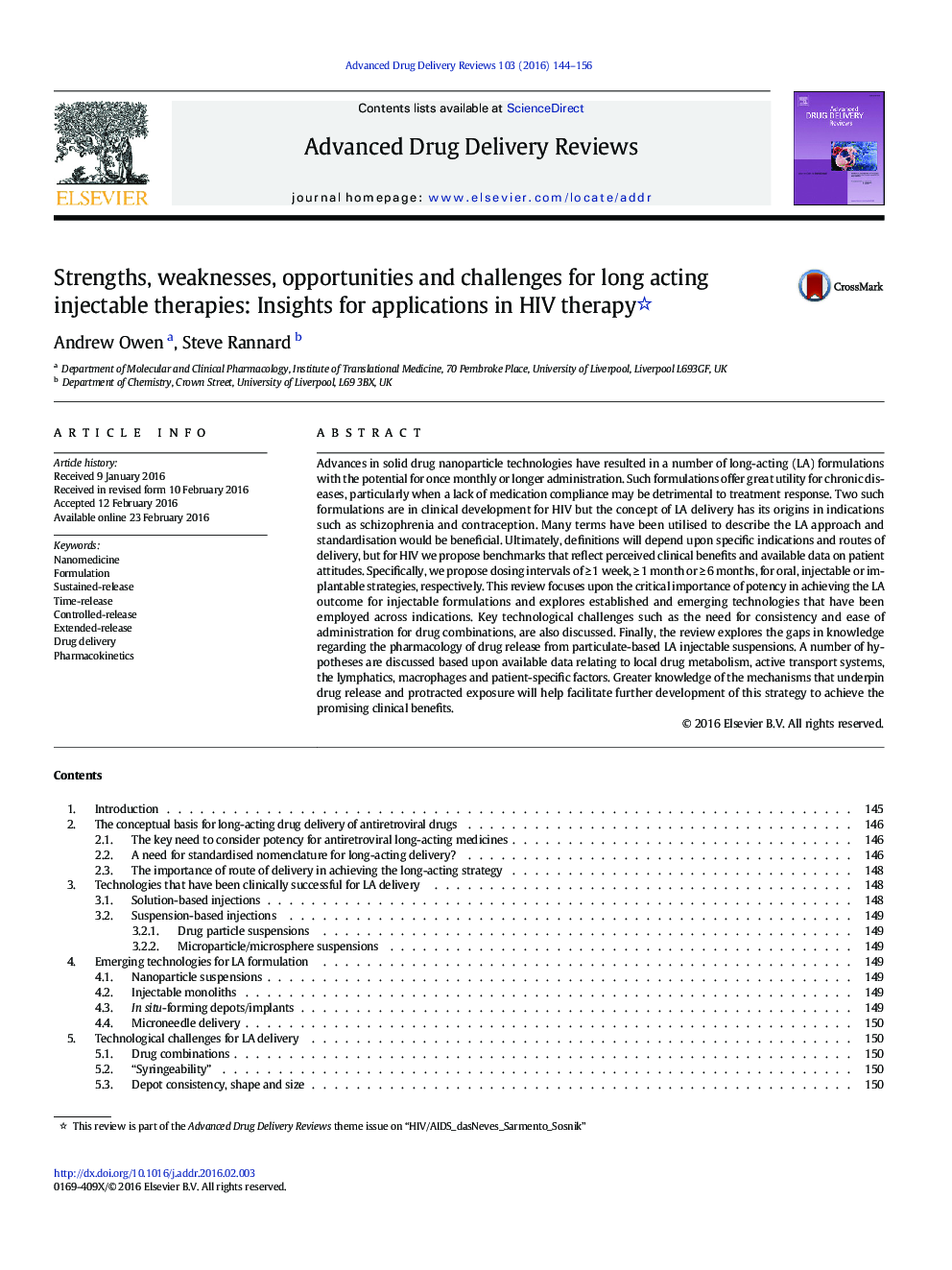| کد مقاله | کد نشریه | سال انتشار | مقاله انگلیسی | نسخه تمام متن |
|---|---|---|---|---|
| 2070688 | 1544562 | 2016 | 13 صفحه PDF | دانلود رایگان |
Advances in solid drug nanoparticle technologies have resulted in a number of long-acting (LA) formulations with the potential for once monthly or longer administration. Such formulations offer great utility for chronic diseases, particularly when a lack of medication compliance may be detrimental to treatment response. Two such formulations are in clinical development for HIV but the concept of LA delivery has its origins in indications such as schizophrenia and contraception. Many terms have been utilised to describe the LA approach and standardisation would be beneficial. Ultimately, definitions will depend upon specific indications and routes of delivery, but for HIV we propose benchmarks that reflect perceived clinical benefits and available data on patient attitudes. Specifically, we propose dosing intervals of ≥ 1 week, ≥ 1 month or ≥ 6 months, for oral, injectable or implantable strategies, respectively. This review focuses upon the critical importance of potency in achieving the LA outcome for injectable formulations and explores established and emerging technologies that have been employed across indications. Key technological challenges such as the need for consistency and ease of administration for drug combinations, are also discussed. Finally, the review explores the gaps in knowledge regarding the pharmacology of drug release from particulate-based LA injectable suspensions. A number of hypotheses are discussed based upon available data relating to local drug metabolism, active transport systems, the lymphatics, macrophages and patient-specific factors. Greater knowledge of the mechanisms that underpin drug release and protracted exposure will help facilitate further development of this strategy to achieve the promising clinical benefits.
Figure optionsDownload high-quality image (116 K)Download as PowerPoint slide
Journal: Advanced Drug Delivery Reviews - Volume 103, 1 August 2016, Pages 144–156
